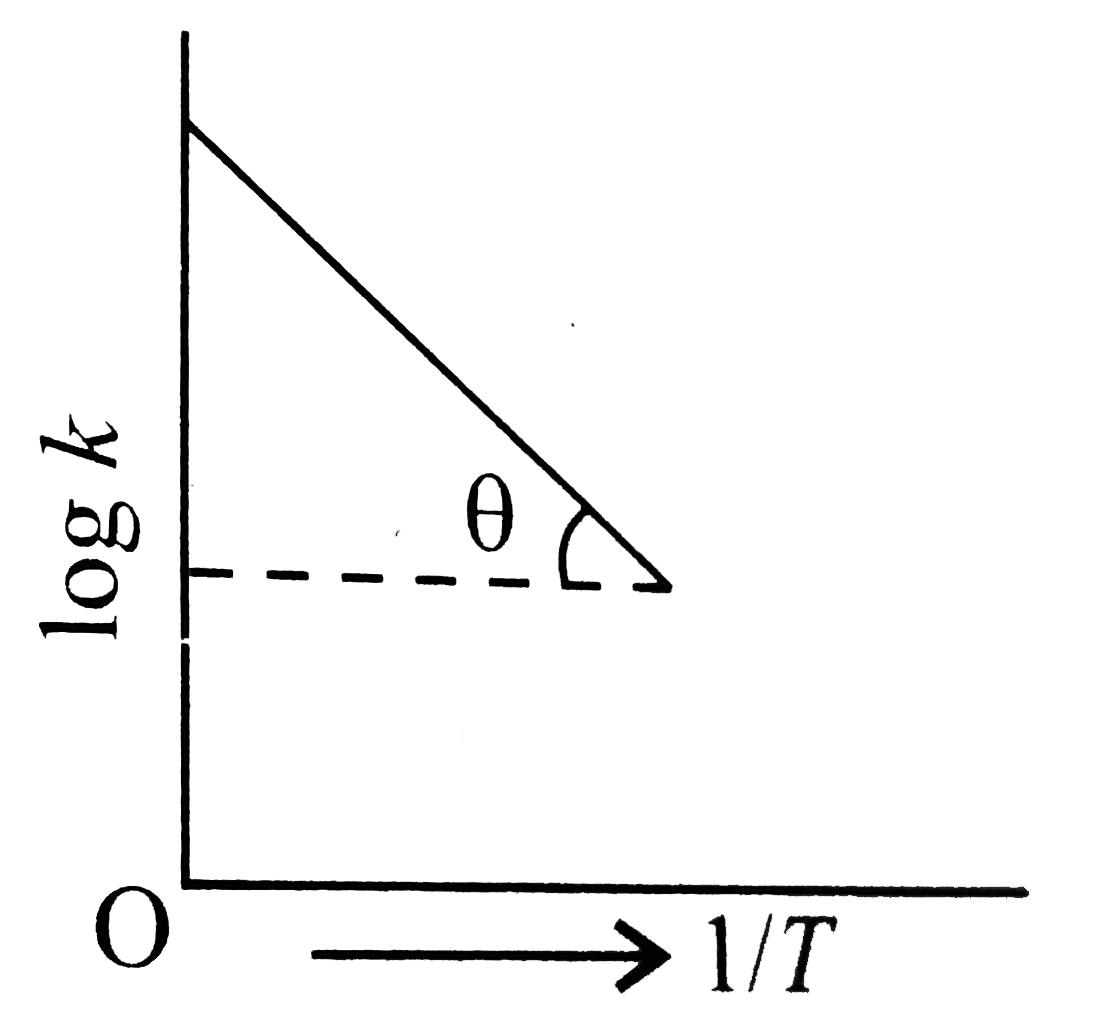Rate constant K varies with temperature by equation log K(min−1)=5−(2000)T.We can conclude that (R=8.314Jmol−1K−1 (or) cal mol−1K−1)Solution in Telugu
Pre exponential factor A is 5
Ea is 4 k cal/mol
Pre exponential factor, A is 105
Ea is 9.212 Kcal/mol
The correct Answer is:C, D
K=A.e−Ea/RT,logK=logA−εa2.303R×1T
logA=5,A=105,Ea2.303RT=2000T,Ea=2000×2.303×21,Ea=9.212KCal
Topper's Solved these Questions
- CHEMICAL KINETICSBOOK - AAKASH SERIESCHAPTER - CHEMICAL KINETICSEXERCISE - LEVEL-II(LECTURE SHEET EXERCISE-II LINKED COMPREHENSION TYPE QUESTIONS)
9 Videos
- CHEMICAL KINETICSBOOK - AAKASH SERIESCHAPTER - CHEMICAL KINETICSEXERCISE - LEVEL-II(LECTURE SHEET EXERCISE-III MATCH THE FOLLOWING QUESTIONS)
3 Videos
- CHEMICAL KINETICSBOOK - AAKASH SERIESCHAPTER - CHEMICAL KINETICSEXERCISE - LEVEL-1 (EXERCISE -II ORDER, MOLECULARITY, HALF LIFE:)
34 Videos
- CHEMICAL KINETCSBOOK - AAKASH SERIESCHAPTER - CHEMICAL KINETCSEXERCISE - EXERCISE - 3.2
45 Videos
- CHEMICAL THERMODYNAMICSBOOK - AAKASH SERIESCHAPTER - CHEMICAL THERMODYNAMICSEXERCISE - Additional Practice Exercise
54 Videos
Similar Questions
A certain endothermic reaction: A→ Product, ΔH=+ve proceeds ina sequence of three elementary steps with the rate constant K1,K2 and K3 and each one having energy of activation E1,E2 and E3 respectively at 25∘C. The observed rate constannt for the reaction is equal to K3√K1K2.
A1,A2 and A3 are Arrhenius parameters respectively.
The observed energy of activation for the reaction is
View SolutionMatch the following columns

View SolutionSucrose decompose in acid solution into glucose and fructose according to the first order rate law, with t12=3.00 hours. What fraction of sample of sucrose remains after 8 hours ?
View SolutionDiscuss on the kinetic spontaneity of a chemical reaction. Is a slow reaction spontaneous? Why?
View SolutionWhich among the following is not an exact differential?
View SolutionThe molar heat capacity of a gas at constant volume is found to be 5calmol−1K−1. Find the ratioγ=CpCv for the gas. The gas constant R=2 cal mol^(-1) K^(-1).
View SolutionRate constant k varies with temperature by equation logk(−1min)=log5−2000kcalRT×2.303. We can conclude that
View SolutionGraph between logk and 1/T [k rate constant (s−1) and T and the temperature (K)] is a straight line with OX=5,θ=tan−1(1/2.303). Hence −Ea will be

View SolutionGraph between log k and 1//T [where K is rate constant in s^(-1) and T is the temperature (in K) is a straight line with Hence, E_(a) will be
View SolutionThe graph between log k and 1/T[K is rate constant (sec−1) and T the temperature (K)] is a straight line with OX=5andθ=tan−1(−12.303).Calculate the value of Ea is cal. ?

View SolutionRate constant k varies with temperature by equation, log k (min+−1)=5−2000T(K) We can conclud:
View SolutionEquilibrium consistant for a reaction is 10. find the value of ΔG0? R=8.314J⋅K−1⋅mol−1,T=300K.
View SolutionGraph between logk and 1/T [k rate constant (s−1) and T and the temperature (K)] is a straight line with OX=5,θ=tan−1(1/2.303). Hence −Ea will be

View SolutionThe molar heat capacity of a gas at constant volume is found to be 5calmol−1K−1. Find the ratioγ=CpCv for the gas. The gas constant R=2 cal mol^(-1) K^(-1).
View SolutionThe units of universal gas constant is
a) Jmol−1K−1
b) Jkg−1k−1
c) Litre atm mol−1k−1
d) cal mol−1k−1
View Solution

